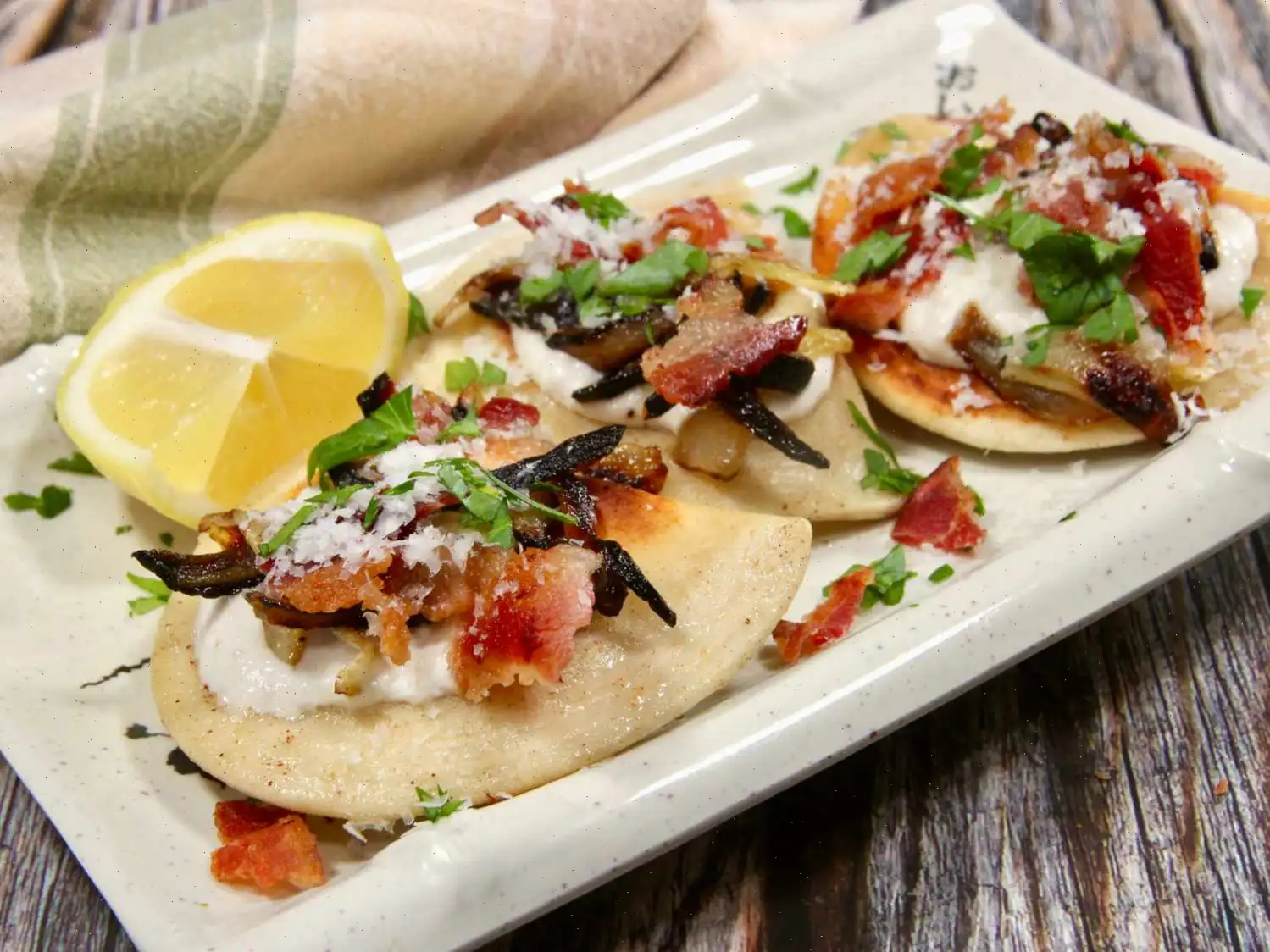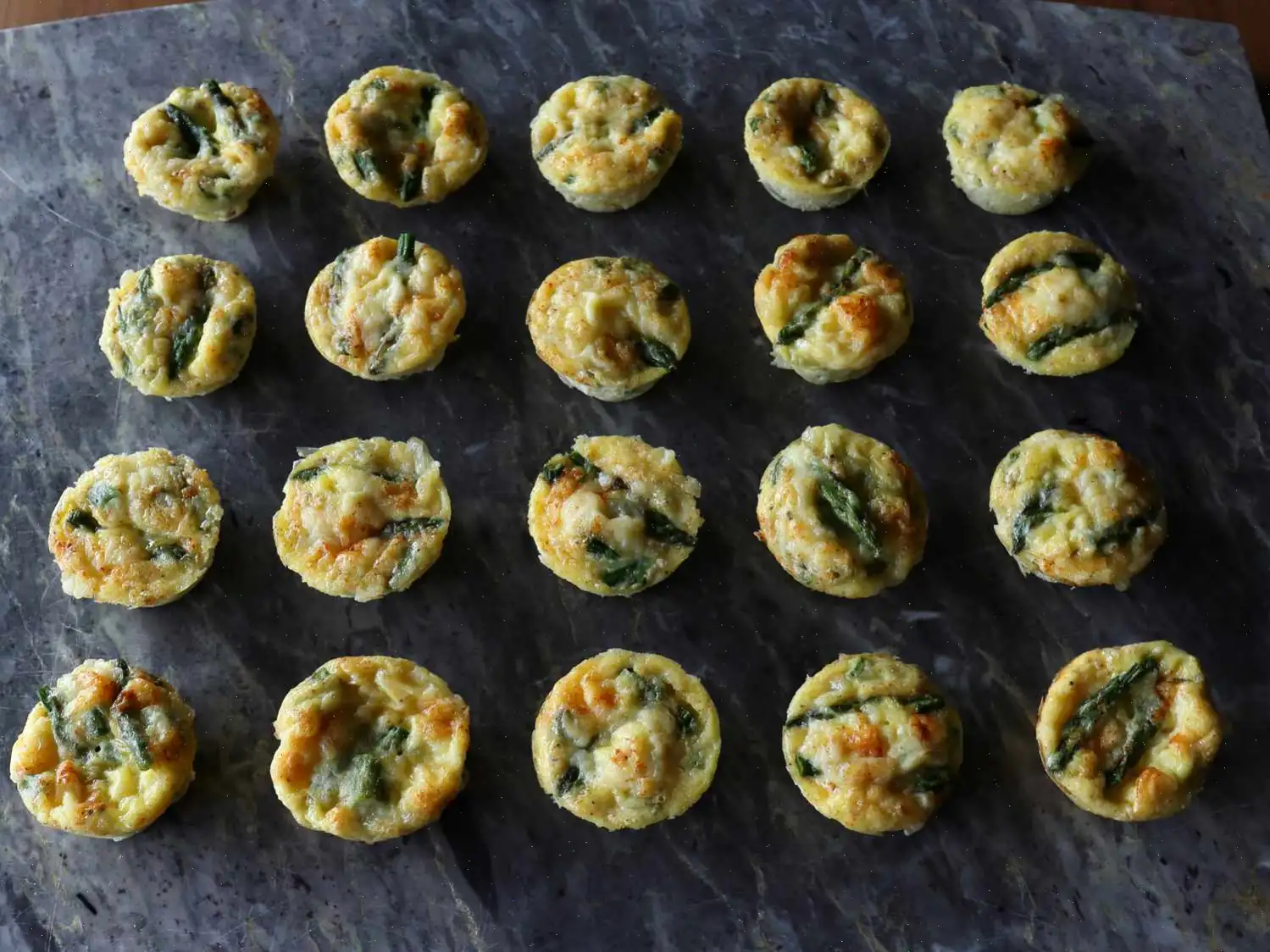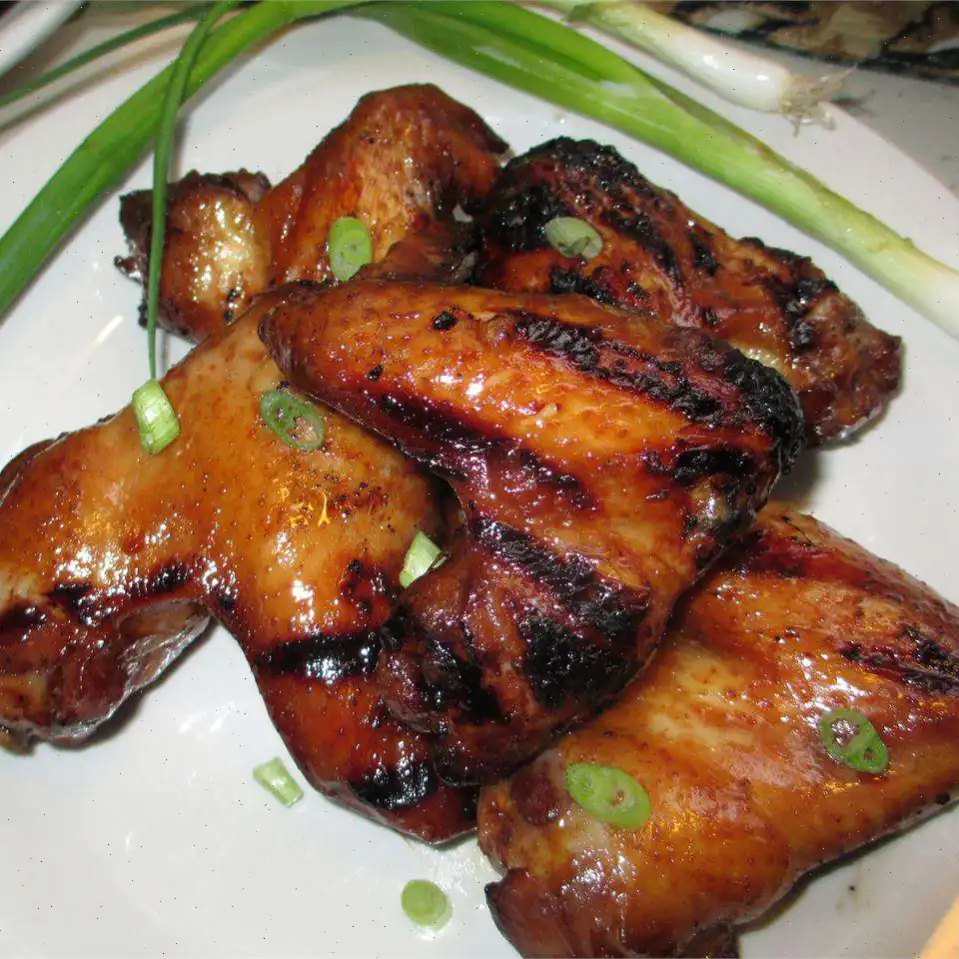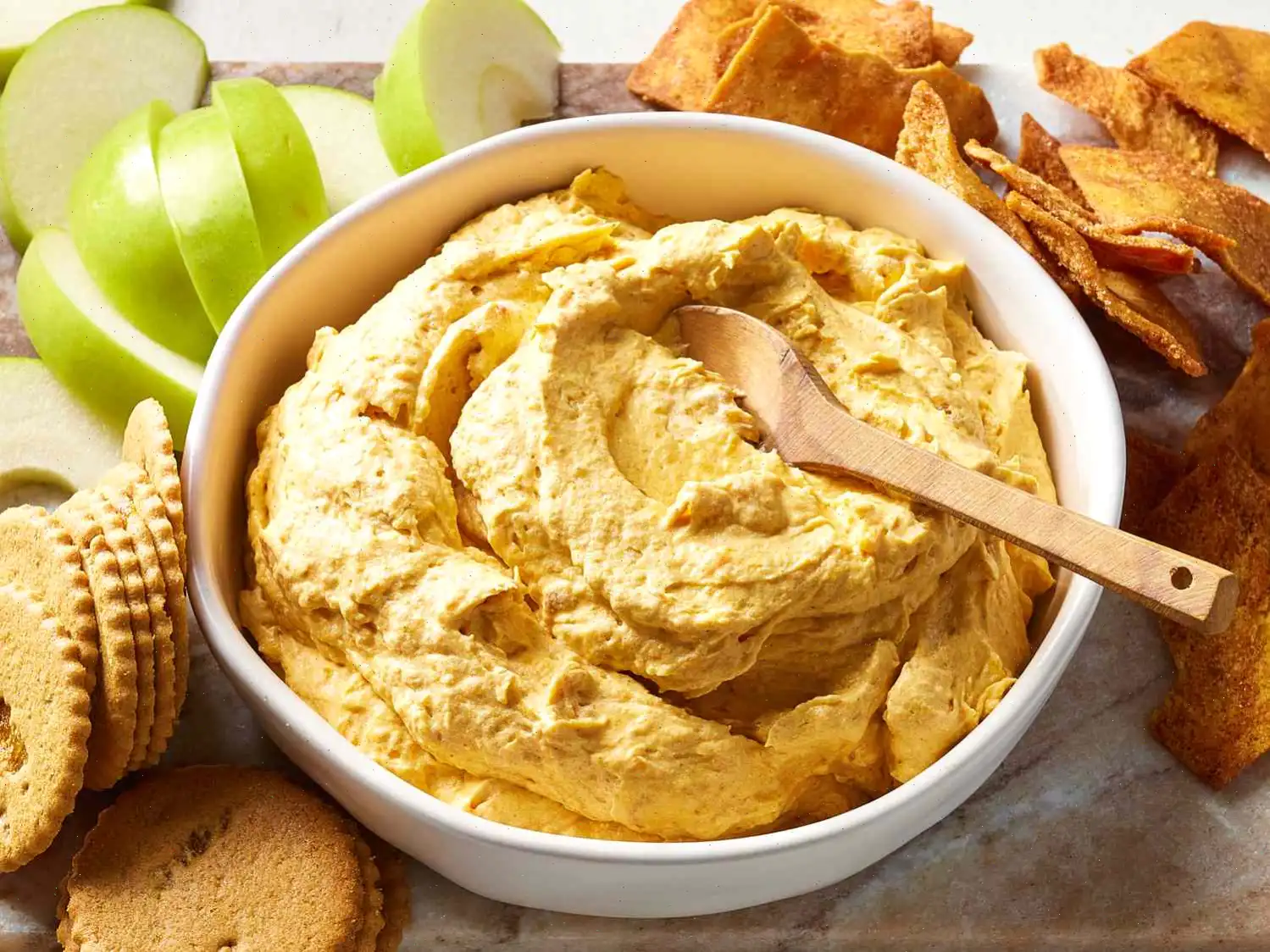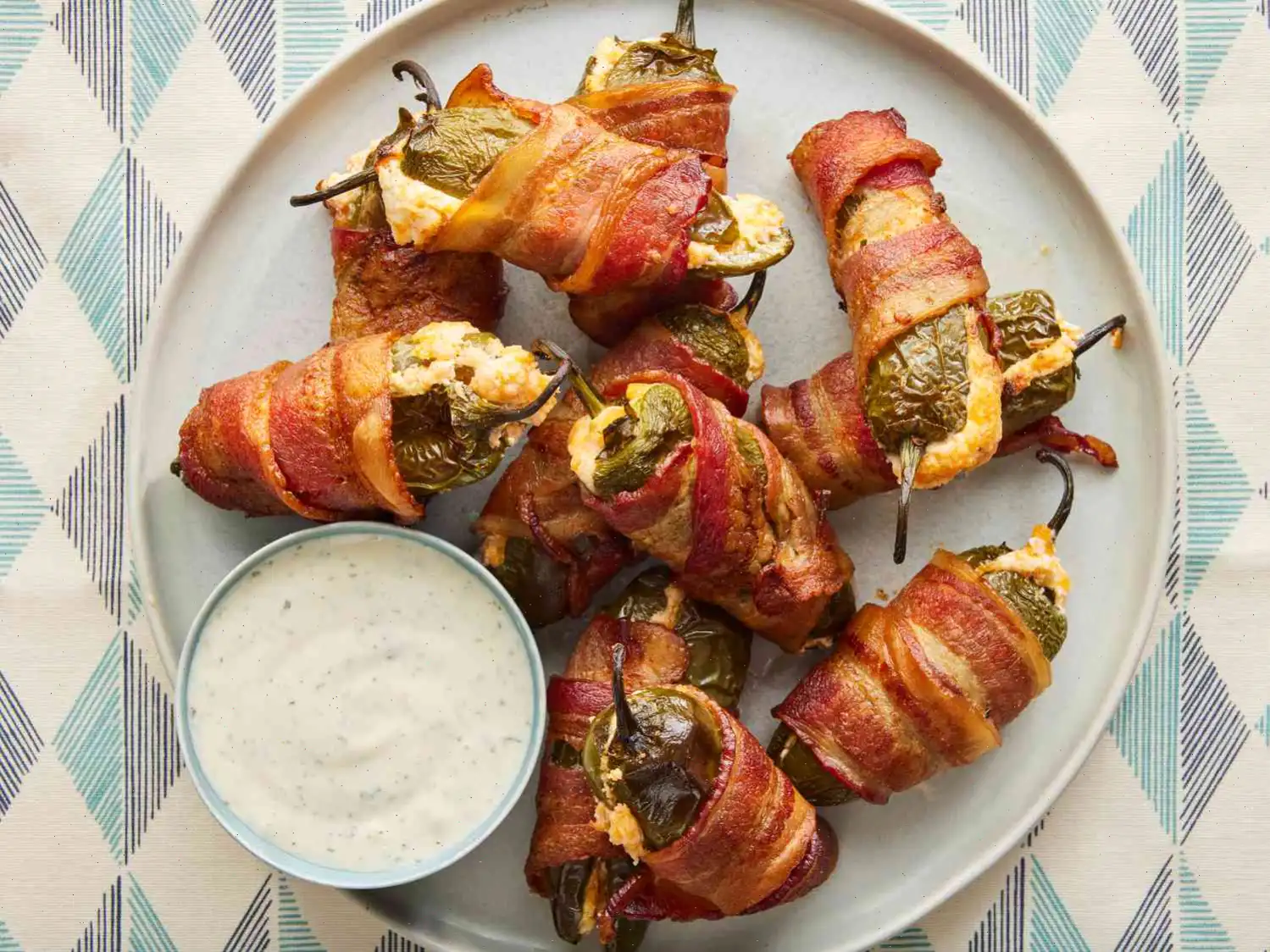
Shortcut Pierogies Recipe
Servings: 4
Ingredients
- Caramelized Onions: 2 sweet onions
- 2 tablespoons avocado oil or canola oil
- Pierogies: 1 (16 ounce) package frozen cheese and potato pierogies (e.g., Mrs. Ts 4-Cheese Medley)
- 2 tablespoons unsalted butter
- 1 tablespoon avocado oil or canola oil
- Salt and freshly ground black pepper, to taste
- Toppings: 1/3 cup sour cream
- 3 strips cooked, crisp bacon, crumbled
- 3 tablespoons grated Parmesan cheese
- Chopped fresh parsley or chives
- 4 fresh lemon wedges
Directions
- Prepare the onions: Trim the ends of the onions, cut them in half lengthwise, and peel. Slice each half thinly from top to bottom.
- Caramelize the onions: Heat the oil in a large skillet over medium heat. Add the onions, tossing them to coat well. Stir occasionally until they begin to soften, then reduce the heat to medium-low. Cook for 15 to 20 minutes, stirring frequently, until the onions are golden brown. If the onions start to stick, add a splash of water.
- Cook the pierogies: In a separate large nonstick skillet, heat butter and oil over medium heat. Add the pierogies in a single layer and cook for about 16 minutes, flipping halfway through (or follow the package directions). Season with salt and pepper to taste.
- Assemble the dish: Once the pierogies are cooked, transfer them to a serving plate. Add a dollop of sour cream to each pierogi, and top with caramelized onions and crumbled bacon.
- Finish the dish: Sprinkle with grated Parmesan cheese and chopped fresh parsley or chives. Serve with lemon wedges on the side.
Cook's Note
If you prefer softer pierogies, you can boil them first. Bring a large pot of water to a boil, add the pierogies, and cook for 3 minutes. Drain the pierogies, then brown them lightly in an oiled skillet for just a few minutes before adding the toppings and serving.
Nutrition Facts
Per Serving: 526 Calories
- Total Fat: 28g (36% Daily Value)
- Saturated Fat: 10g (48% Daily Value)
- Cholesterol: 43mg (14% Daily Value)
- Sodium: 851mg (37% Daily Value)
- Total Carbohydrate: 62g (23% Daily Value)
- Dietary Fiber: 7g (26% Daily Value)
- Total Sugars: 13g
- Protein: 14g (28% Daily Value)
- Vitamin C: 103mg (114% Daily Value)
- Calcium: 170mg (13% Daily Value)
- Iron: 3mg (16% Daily Value)
- Potassium: 612mg (13% Daily Value)
* Percent Daily Values are based on a 2,000 calorie diet. Your daily values may be higher or lower depending on your calorie needs.
The Story Behind Pierogies
Pierogies are a beloved dish with roots tracing back to Central and Eastern Europe, particularly Poland and Ukraine. Traditionally, these dumplings were made by hand, filled with a variety of ingredients such as potatoes, cheese, sauerkraut, mushrooms, or meat. Their history is intertwined with the agricultural lifestyle of these regions, where simple, hearty, and affordable ingredients were turned into nourishing meals. Over centuries, pierogies evolved from a staple home-cooked dish to a symbol of cultural identity and festive gatherings, often appearing at holidays and family celebrations.
Regional Variations and Features
While the concept of stuffed dumplings is universal, pierogies have distinct regional characteristics. In Poland, they are often boiled and lightly fried, served with onions and sour cream, or accompanied by bacon bits. Ukrainian pierogies, known as varenyky, might include sweet fillings like cherries or berries. In the United States and Canada, frozen pierogies have become popular, with shortcuts like using pre-packaged varieties for quicker preparation. Ingredients and toppings vary, reflecting local tastes and available produce, which gives each region its own culinary signature.
What Sets Pierogies Apart
Pierogies differ from other dumplings due to their unique dough-to-filling ratio and the variety of both savory and sweet fillings. Unlike Italian ravioli, which are usually smaller and more delicate, pierogies are heartier, often pan-fried after boiling to create a golden, slightly crisp exterior. They are also distinct from Asian dumplings in their flavor profiles, favoring potato, cheese, and onion combinations rather than soy-based seasonings or meats. This versatility allows pierogies to be served as appetizers, main courses, or even desserts.
Typical Places to Enjoy Pierogies
Pierogies are commonly found in Eastern European households, Polish festivals, and diners specializing in comfort food. In North America, they appear in casual restaurants, food trucks, and grocery store frozen sections, often dressed with modern twists like caramelized onions, bacon, or gourmet cheeses. They are popular at gatherings, potlucks, and parties, offering a convenient and crowd-pleasing dish that bridges traditional recipes with contemporary dining habits.
Interesting Facts About Pierogies
- Pierogies are celebrated annually in the United States, with events like the Pierogi Festival in Whiting, Indiana, attracting thousands of fans.
- They were historically a way to stretch inexpensive ingredients into a filling meal, highlighting the resourcefulness of Eastern European cooks.
- Modern shortcuts, such as using frozen pierogies, reflect the dishs adaptation to busy lifestyles while maintaining its signature taste.
- Sweet pierogies, often served with fruit preserves or sweetened cheese, demonstrate the dumplings versatility beyond savory meals.
- The word pierogi is plural in Polish; the singular is pierg, but in English, both forms are often used interchangeably.
You can listen to this recipe in AI audio format. Simply click the play button below to listen to the content in a format that suits you best. It’s a great way to absorb information on the go!
FAQ about Shortcut Pierogies Recipe
Comments
Justin Edwards
10/20/2024 10:14:38 AM
Some of the comments here are overly critical in my opinion. The recipe creator never stated that this was an AUTHENTIC Polish recipe, and yet she was reprimanded for adding an "s" at the end. It clearly says "pierogieS" on the box, for goodness sake. I had never made pierogi before, whether fresh or frozen, and I wasn't sure about the best way to serve them. This appears to be a delightful and SIMPLE appetizer recipe. Appreciate you sharing this, Pat.
Nancy Robinson
12/25/2022 10:26:09 PM
Great! Just a quick heads-up - "pierogi" is actually already plural, so no need for an additional 's'.
Susan Diaz
05/11/2024 09:38:19 AM
I really liked this recipe. I've tried making my own pierogi and bought frozen ones before, but this new way of serving them was a pleasant change. It's a shame that some of the feedback was overly critical. Don't let the negative comments get you down!
Brandon Brown
03/20/2024 02:45:19 PM
I appreciate the recipe! My family enjoys frozen Pierogi regularly, so it's nice to have a new way to enjoy them.
Janet Hill
01/12/2024 04:48:39 AM
I enjoy the frozen options and this recipe is a great way to jazz them up. I plan on trying this out soon. I might consider adding some tomatoes for a pop of color.
Elizabeth Nguyen
12/18/2022 12:59:06 PM
Not everyone is fortunate to have ancestors as talented as yours. They described it as an "appetizer". Many dishes are no longer limited to dinner, so let's just relax. It's not such a big deal.


